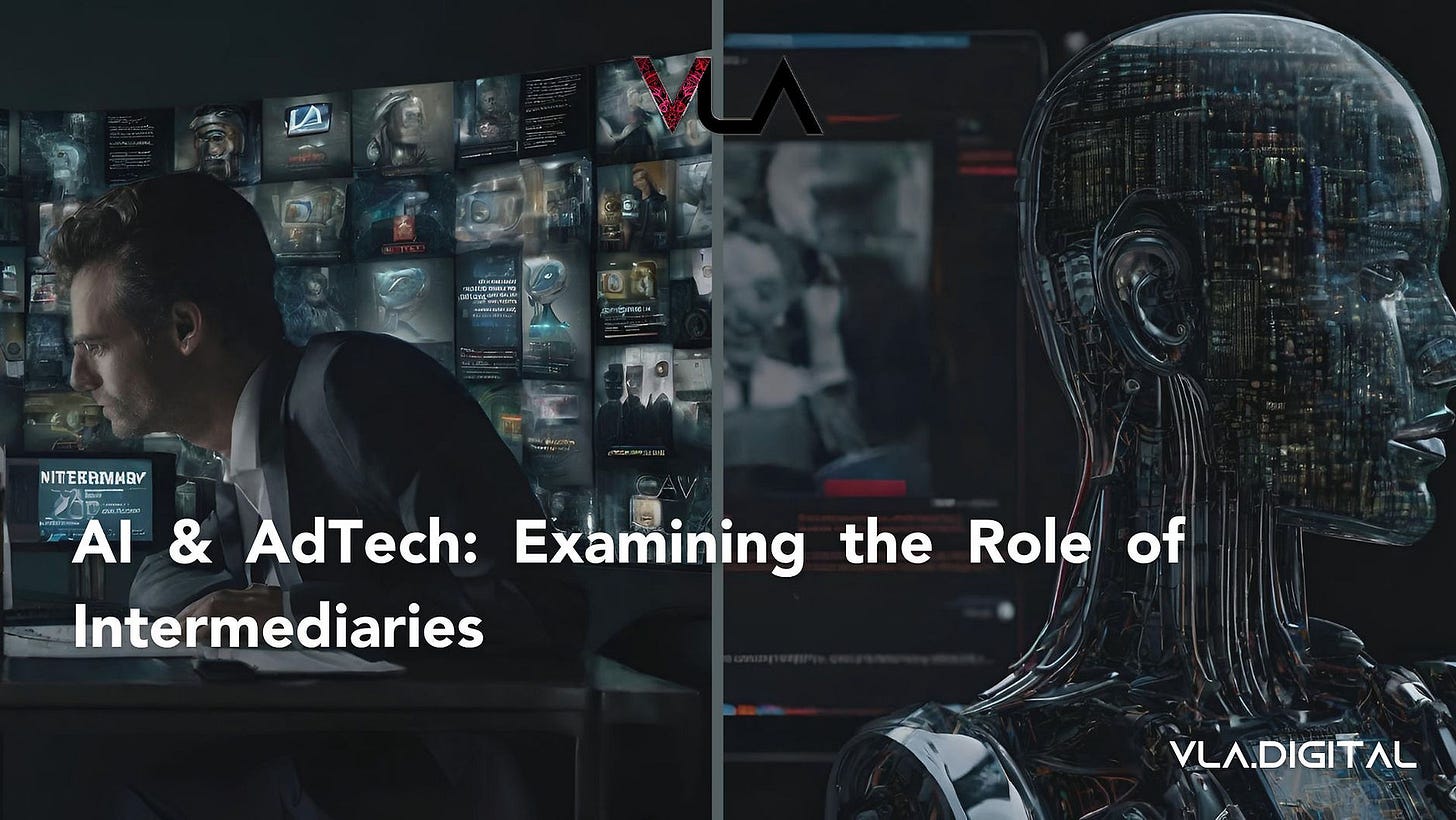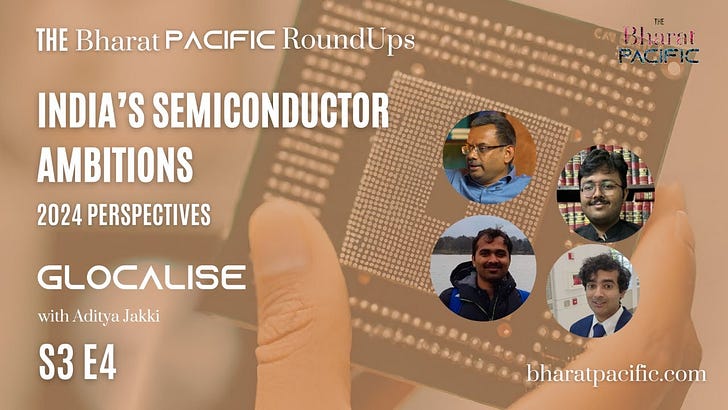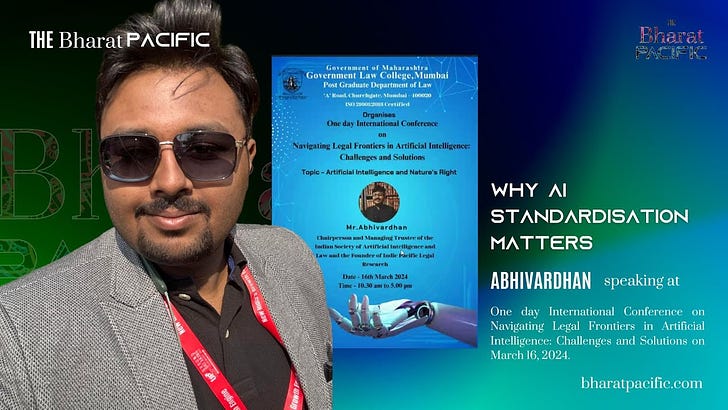AI & AdTech: Examining the Role of Intermediaries and other Insights from VLA
From the ISAIL Secretariat
We are glad to feature an insight authored by Vaishnavi Singh, a Research Intern at the Indian Society of Artificial Intelligence and Law.
The insight is published at Visual Legal Analytica (indicpacific.com/vla). You can access the complete article here.
AI & AdTech: Examining the Role of Intermediaries
In today's digital age, advertising has undergone a significant transformation with the integration of Artificial Intelligence (AI) technology. This high-tech wizardry has completely changed the game for businesses by transforming how they connect with their target audiences, manage their advertising budgets, and supercharge their marketing strategies on social media platforms. This insight delves into the profound impact of AI technology on advertising budgetary issues in social media platforms, exploring how intermediaries and third parties play a crucial role in leveraging AI for effective advertising campaigns. Additionally, scrutinising the pivotal role of intermediaries and third parties in shaping and optimising AI-driven advertising campaigns.
The Evolution of Advertising in the Digital Era
Advertising has evolved from traditional methods to digital platforms, with social media becoming a prominent channel for businesses to connect with their customers. The vast user base and engagement levels on platforms like Facebook, Instagram, Twitter, and LinkedIn have made them ideal spaces for targeted advertising. However, managing advertising budgets effectively on these platforms can be challenging without the right tools and strategies.
AI technology has emerged as a game-changer in the advertising landscape, offering advanced capabilities for data analysis, audience targeting, ad personalization, and performance optimization. By harnessing the power of AI algorithms and machine learning models, businesses can make data-driven decisions to maximize the impact of their advertising campaigns while minimizing costs.
Social media platforms have become central hubs for advertising, offering diverse audience demographics and sophisticated targeting options. As advertisers flock to these platforms, the need for efficient budget management becomes paramount.
Dynamic Budget Allocation
Artificial Intelligence (AI) is like a magic wand for advertisers, especially when it comes to managing budgets in the dynamic world of social media. With AI, advertisers get the superpower of adjusting budgets on the fly based on how well their ads are doing. If an ad is hitting the bullseye, AI suggests putting more money into it, but if something isn't quite clicking, it advises scaling back. This dynamic approach ensures that every penny spent on advertising is a wise investment, maximising returns.
But the AI magic doesn't stop there. Predictive analytics, powered by AI, takes the guesswork out of budget planning. By crunching numbers from past campaigns and spotting market trends, AI algorithms become crystal balls for advertisers. They predict how ads will perform in the future, helping businesses plan their budgets with precision. It's like having a financial advisor for your advertising dollars, guiding you to spend where it matters most.
You can access the complete insight here.
The New York Times vs OpenAI, Explained
We are also featuring an insight published by Shresh Kiran Narang, Research Intern at the Indian Society of Artificial Intelligence and Law.
You can read the complete insight here.
The New York Times Company has filed a lawsuit against Microsoft Corporation, OpenAI Inc., and various other entities associated with OpenAI, alleging copyright infringement. The lawsuit, filed in the United States District Court for the Southern District of New York, claims that OpenAI's Generative Pre-trained Transformer models (GPT), including GPT-3 and GPT-4, were trained using vast amounts of copyrighted content from The New York Times without authorisation.
This explainer addresses certain facts and aspects of the lawsuit filed by The New York Times against OpenAI and Microsoft.
Facts about The New York Times Company v. Microsoft Corporation, OpenAI Inc. et al.
Plaintiff: The New York Times Company
Defendants: Microsoft Corporation, OpenAI Inc., OpenAI LP, OpenAI GP, LLC, OpenAI LLC, OpenAI OpCo LLC, OpenAI Global LLC, OAI Corporation, OpenAI Holdings, LLC
Jurisdiction: United States District Court, Southern District of New York
The United States District Court, Southern District of New York has subject matter jurisdiction as provided under 28 U.S.C. § 1338(a).
The United States District Court, Southern District of New York has territorial jurisdiction as the defendants Microsoft Corporation, OpenAI Inc. either themselves or through their subsidiaries, agents have been found as provided under 28 U.S.C. §1400(a).
The United States District Court, Southern District of New York is the proper venue as 28 U.S.C. §1391(b)(2) entitles the plaintiff (The New York Times Company, in this case) to file suit as a substantial portion of property (The copyrighted material of The New York Times, Company) in this case is situated.
Allegations made by The New York Times Company against the defendants, summarised
The New York Times Company alleges that Microsoft Corporation, OpenAI Inc. et al. were unauthorised to use and copied the content of The New York Times Company in the following manner –
#1 - Defendants were unauthorised to reproduce the work of the plaintiffs to train Generative AI
17 U.S.C. §106(1) entitles the owner of the copyright to reproduce the copyrighted work in copies or phonorecords.
The plaintiff alleges that the defendants violated their right recognised under 17 U.S.C. §106(1) as the defendants GPT Models are based on Large Language Models (hereinafter, LLMs).
The plaintiffs allege that the pre-training stage of the LLM requires “collecting and storing text content to create training datasets and processing the content through the GPT models”, therefor the defendants used Common Crawl, a copy of the internet which has 16 million records of content from The New York Times Company.
The plaintiffs allege that the defendants copied the content of The New York Times Company without license and providing compensation.
#2 - The GPT Models reproduced derivatives of the copyrighted content of The New York Times Company
The plaintiff alleges that the defendants GPT Models have memorised the copyrighted content of The New York Times Company and thereafter reproduce the content memorised verbatim.
The plaintiffs attached outputs from GPT-4 highlighting the reproduction of the following articles-
As Thousands of Taxi Drivers Were Trapped in Loans, Top Officials Counted the Money by Brian M. Rosenthal
How the U.S. Lost Out on iPhone Work by Charles Duhigg & Keith Bradsher
#3 - Defendants GPT Models displayed the copyrighted content of The New York Times Company which was behind a paywall
The plaintiff, The New York Times Company alleges that the defendants GPT models displayed the copyrighted content in the following ways: (1) by allegedly showing copies of content from The New York Times Company which have been memorised by the GPT Models, (2) by showing search results of the content which are similar to the copyrighted material.
The plaint highlights a user’s prompt which requires ChatGPT to type the content of the article : Snow Fall: The Avalanche at Tunnel Creek verbatim.
The plaint also highlighted ChatGPT reproducing Pete Wells review of Guy Fieri’s American Kitchen & Bar when prompted by a user.
#4 - Defendants disseminating current news by retrieving copyrighted material from of The New York Times Company
The plaintiff alleges that the defendants GPT models use “grounding” techniques. The grounding techniques involve the receiving a prompt from the user, using the internet to get copyrighted content from The New York Times Company and then the LLM stitches the additional words required to respond to the prompt.
To provide evidence, the plaint highlighted the reproduction of Catherine Porter’s article, ‘To Experience Paris Up Close and Personal, Plunge Into a Public Pool’ After reproducing the content, the defendants GPT model does not provide a link to access the website of The New York Times Company.
The plaint further highlights ChatGPT reproducing Hurbie Meko’s article, ‘The Precarious, Terrifying Hours After a Woman Was Shoved Into a Train.”
You can read the complete insight here.
Do not miss these…
India's Semiconductor Journey in 2024 | The Bharat Pacific RoundUps
Our Curator, Aditya Jakki is hosting a discussion on India’s Semiconductor Mission and approach in 2024 is live now. We are hosting Abhivardhan, Arun Mamphazy and Satvik Pendyala. Watch the live session.
Why is AI Standardisation Needed? | Abhivardhan @GLC Mumbai
We are pleased to announce our Chairperson, Abhivardhan's participation as a Keynote Speaker in the inaugural session of the One-Day International Conference on Navigating Legal Frontiers in Artificial Intelligence: Challenges and Solutions, which took place on







